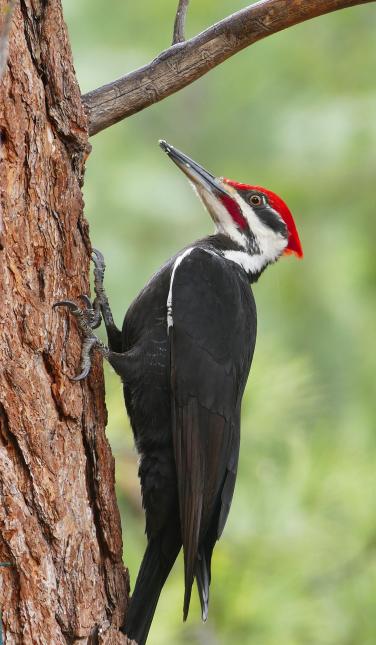Revealing the Tricks of Woodpeckers: Behavior, Habitat, and A Lot More
Woodpeckers, with their distinct habits and specialized adjustments, have long captivated researchers and nature enthusiasts alike. These amazing birds have a variety of fascinating secrets that dropped light on their survival strategies, habitat choices, and detailed communication methods. By discovering the enigmas bordering woodpeckers' behavior and habitat options, a much deeper understanding of these bird marvels arises, offering a peek right into their remarkable globe. So, what makes these birds really exceptional, and how do they navigate their environment with such precision and skill? Allow's check out the fascinating realm of woodpeckers and decipher the enigmatic details that make them such interesting subjects of research study.
Woodpecker Habits Insights
In checking out woodpecker habits, an interesting screen of specialized abilities and adjustments emerges, dropping light on their remarkable eco-friendly specific niche. Woodpeckers, recognized for their unique drumming on trees, have a range of behavior qualities that add to their survival and success in their setting.
Furthermore, woodpeckers show a distinct feeding actions defined by their capacity to essence pests from tree bark using their specialized beaks. Their lengthy, barbed tongues help in catching prey, while their strong neck muscular tissues give stability and accuracy during pecking movements. This feeding technique permits woodpeckers to gain access to hidden insect larvae and remove them with amazing efficiency.
Environment Preferences and Selection
What factors affect the habitat choices and selection of woodpeckers? One crucial aspect affecting woodpecker habitat option is the accessibility of suitable nesting websites. Woodpeckers generally favor forests with a mix of mature trees that offer adequate possibilities for dental caries excavation.
Furthermore, woodpeckers show a preference for habitats with a bountiful supply of food resources. They are mostly insectivorous, feeding upon beetles, ants, larvae, and other pests located in worn out wood or tree bark. Woodpeckers have a tendency to favor woody locations with a diverse insect population to fulfill their nutritional needs.
Furthermore, the presence of dead or worn out trees is an additional crucial element in woodpecker habitat selection. These trees not only give food resources but also use appropriate substrate for dental caries excavation. Dead trees are vital for the maintenance of healthy and balanced woodpecker populations, as they play a crucial function in the woodpeckers' life cycle and environment dynamics.
Feeding Habits and Diet Plan Composition
Woodpeckers show a specialized feeding habits focused on foraging for bugs within various environments. Their diet largely contains pests such as beetles, ants, caterpillars, and spiders, which they find by tapping on tree bark and paying attention for the sound of activity inside. Woodpeckers use their solid beaks to pierce into the timber and their long, barbed tongues to draw out target from gaps. In enhancement to insects, woodpeckers likewise consume tree sap, fruits, nuts, and seeds, adding selection to their diet plan relying on the season and accessibility of food sources.
The foraging techniques of woodpeckers are well-adapted to their arboreal way of living. Woodpeckers play an essential role in preserving the health of forests by regulating insect populaces and helping in the decomposition of wood.
Drumming Appears and Interaction
Using rapid drumming sounds on numerous see here now surface areas, woodpeckers utilize an unique form of interaction to signify area boundaries and bring in companions. This drumming habits is not only a method of communication but additionally functions as a method for woodpeckers to develop their visibility within a certain area. The intensity, rate, and pattern of the drumming can communicate important info to other woodpeckers around.
Woodpeckers utilize drumming sounds to announce their visibility in a region and to why not find out more alert off potential burglars. The loud and repeated nature of the drumming serves as a clear signal to various other woodpeckers that the area is currently declared. This aids in lowering disputes and minimizing physical battles between people.

Survival Adaptations and Specialized Composition

Final Thought
To conclude, woodpeckers exhibit distinct behaviors, such as drumming noises for interaction, and have specialized anatomy for survival in their chosen habitats. Their feeding behaviors and diet make-up further demonstrate their versatility to various settings. By recognizing these elements of woodpeckers, researchers and try this site conservationists can much better secure and preserve these remarkable birds and their ecological communities.